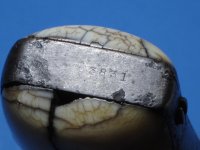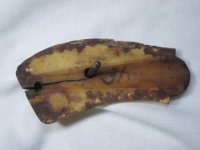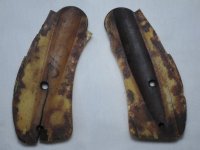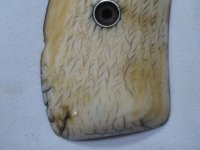- Joined
- Jan 1, 2008
- Messages
- 795
- Reaction score
- 627
Purchased this well worn ("abused" is probably more accurate) revolver - just cannot resist low serial numbers (3831 in this case) and somewhat unique (ivory) grips. The barrel is the common 6.5", and it has the 2-line patent markings with the last being the 1871 "Reissue" date. Serial numbers match on the butt, cylinder, and cylinder latch. There are no other markings that I can find. I believe it is .44 S&W Russian, although I do not have any cartridges on hand other than a .44 S&W American which fits well (and which, if I understand it correctly, should fit since it is very slightly smaller than the S&W Russian). Some sources of information indicate that there was quite a bit of overlap in serial numbers for variations of this gun. My questions:
1. Am I correct that this is a New Model No. 3?
2. With the low serial number, was it possibly one of those that may have been sent to Turkey or Japan?
3. Is it worthy of a factory letter?
4. Approximate date of manufacture/leaving factory?
5. Was $360 a fair price for this old beater?
Thanks - and any other insights about this gun would be appreciated.
1. Am I correct that this is a New Model No. 3?
2. With the low serial number, was it possibly one of those that may have been sent to Turkey or Japan?
3. Is it worthy of a factory letter?
4. Approximate date of manufacture/leaving factory?
5. Was $360 a fair price for this old beater?
Thanks - and any other insights about this gun would be appreciated.








